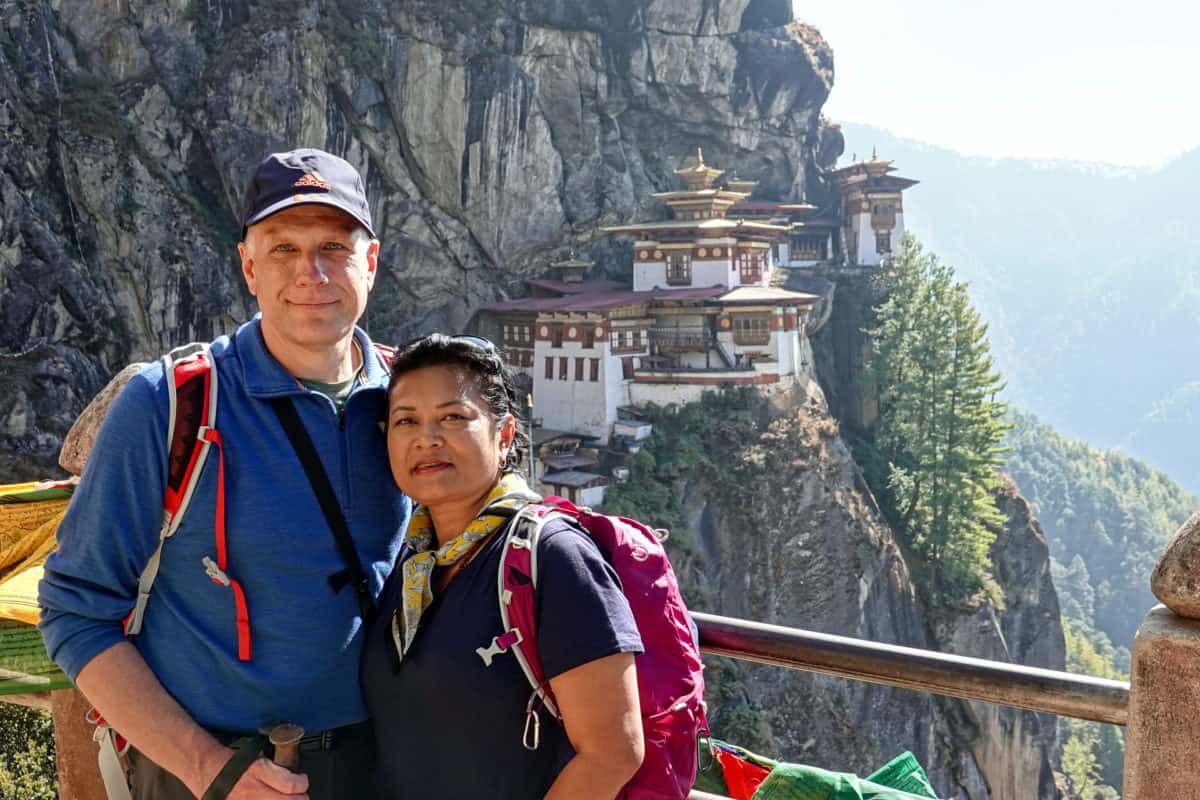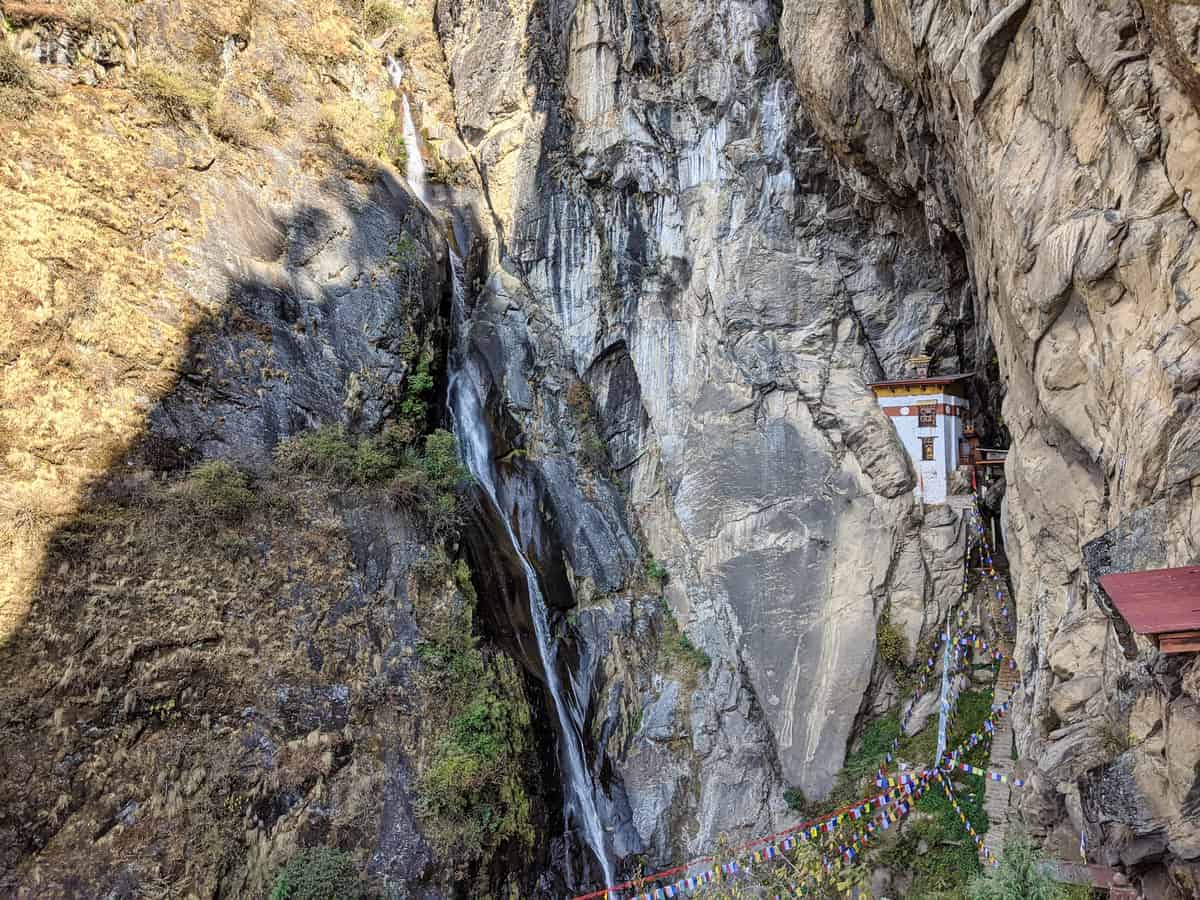Embrace Bhutan Cultural Tour
Paro | Bhutan
18 Nov 2019 | Mon
Day 12 of 13
– Hike to Tiger’s Nest –

Entrance | First Section – By Horse, Mule, or On Foot
After arriving at the entrance and parking area, our driver dropped us off. We took a short walk to reach the area where the horses and mules were. For the first section of the hike, the group all rode horses or mules. I don’t think it was mandatory to ride the first section by horse or mule but it was something that was included with our tour.

Kanchana got a small horse and I got a mule. For the duration of the first section, we had two sets of guides – our guides and the caretakers of the horses and mules. Our guides also provided face masks to help with the dirt/dust kicked up by the horses and mules.

After a short time, we reached the location to switch from horses and mules to walking/hiking on foot. Here there was a large display of prayer wheels and flags along with a pedestrian overlook with beautiful views of Tiger’s Nest and the surrounding valley below.



















Second Section – Hike to Tea House
The second section done on foot/hiking would take us to the Tea House. We did not find this particular section overly difficult – the soil walkways were fairly wide and only had a slight incline. As long as one took it slow and steady they should be fine.

When we arrived at the Tea House we took a short rest break. Outside of the main tea house and restaurant, there was a series of small shops and restrooms. The views of Tiger’s Nest were breathtaking from this location!

After a short time, our guides wanted us to quickly get back on the trail to continue our hike to Tiger’s Nest, mentioning that we would eat lunch here on our way back.







Third Section – Hike to Tiger’s Nest
The third and final section of our hike to Tiger’s Nest was the most challenging – steep decline and inclines (with uneven steps and terrain), narrow walkways – full of people going in both directions. The last bit before entering into the temple area was very steep (with many steps). One has to pay attention, watching every step so that they do not accidentally trip or fall.

Navigating through this area was very beautiful – so much to see (natural rock terrain, waterfalls flowing from high above, numerous prayer flags spread in unique patterns and formations along with the amazing Tiger’s Nest temples built onto the side of the mountain. Truly breathtaking!
















Tour Tiger’s Nest
Return to Tea House Cafeteria | Best Views












Lunch at Tea House
Included with our hike to Tiger’s Nest was a meal from the Tea House. It was a buffet style that had quite a selection of Bhutanese dishes (mostly vegetarian) – all very tasty! What was truly spectacular was the amazing views of Tiger’s Nest while enjoying our lunch!








Return to Entrance (Bottom of Mountain)


Unforgettable Experience!
For our 13-day tour of Bhutan, Tiger’s Nest was the grand finale! Wow, what an unforgettable experience it was! We were so lucky to have perfect weather to do it.
All of our experiences in Bhutan were truly amazing but leaving Tiger’s Nest at the end was the icing on the cake!